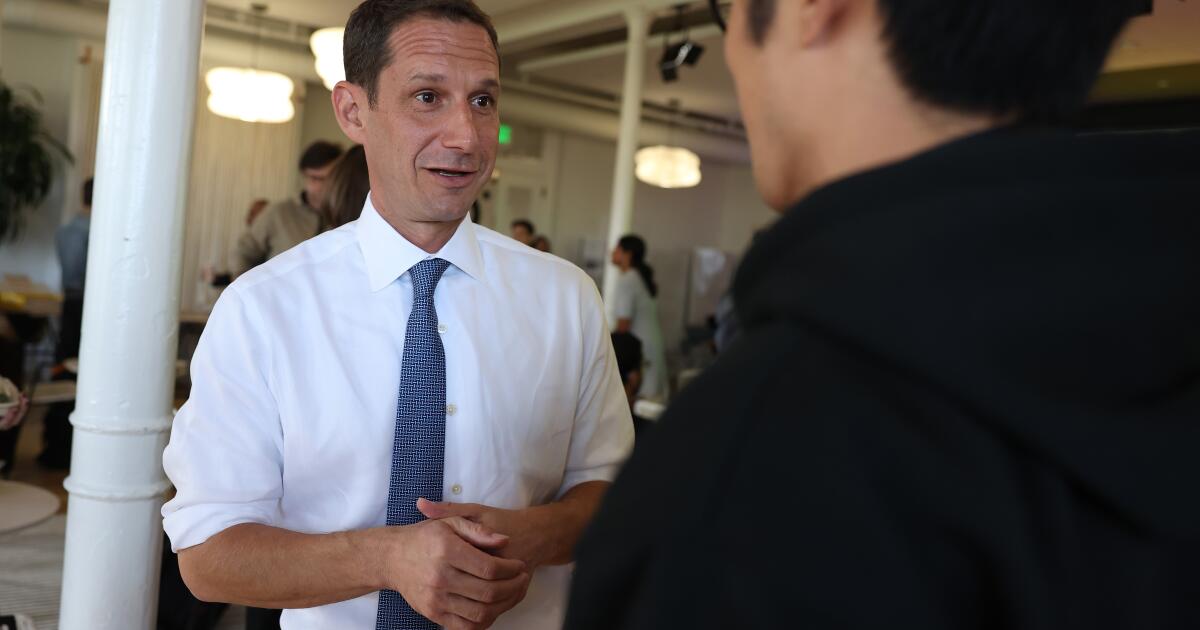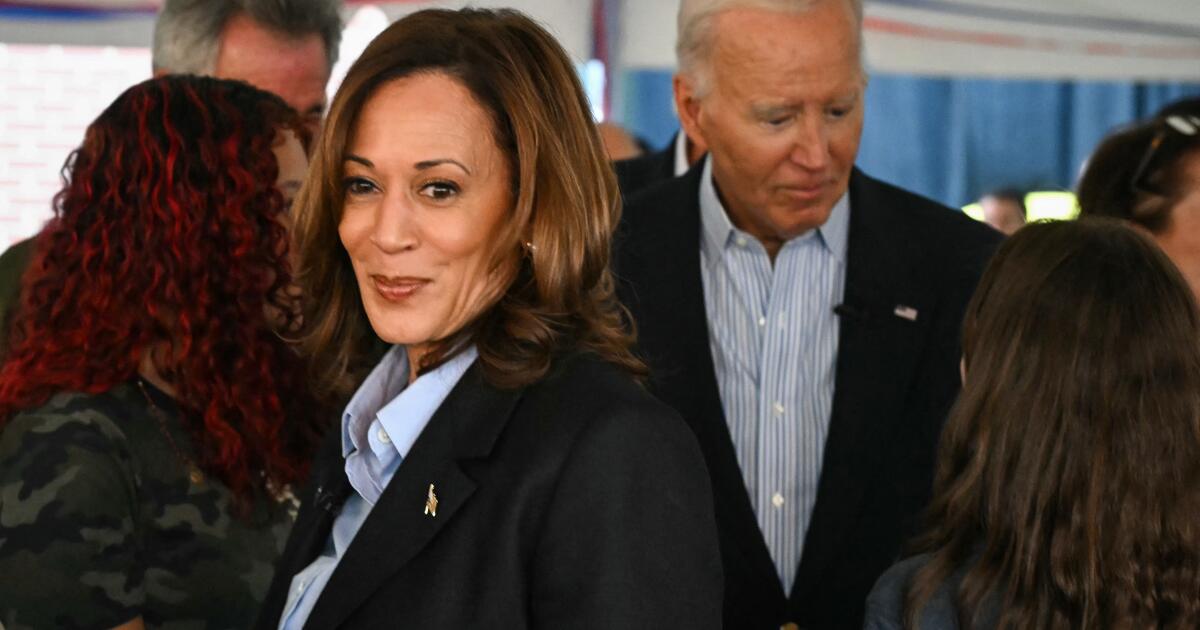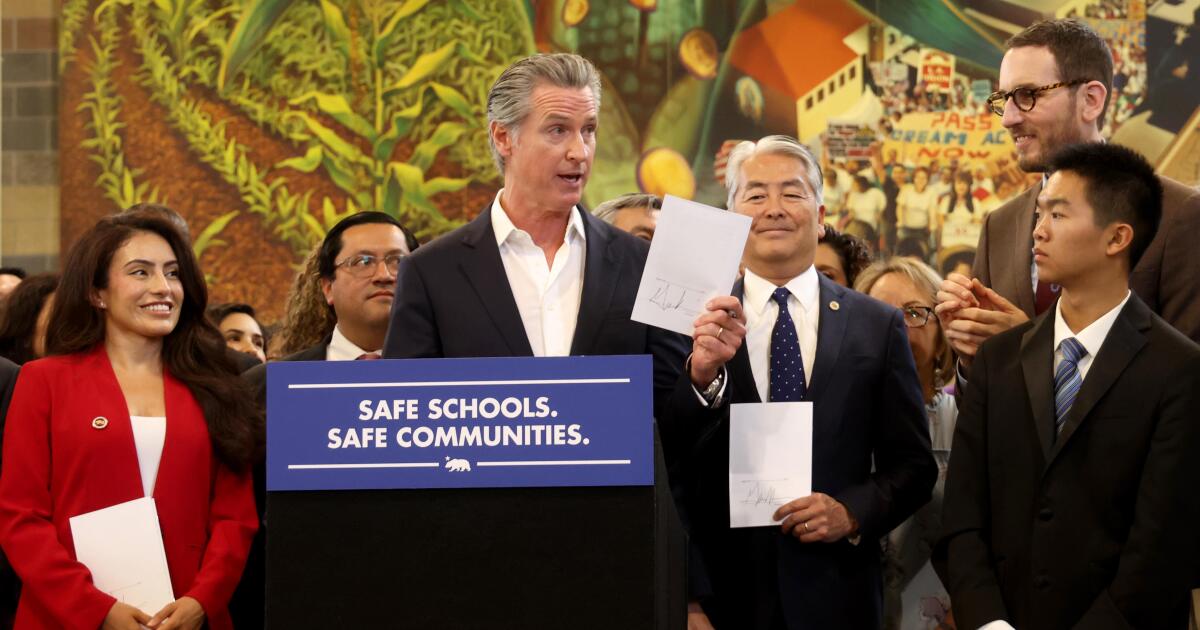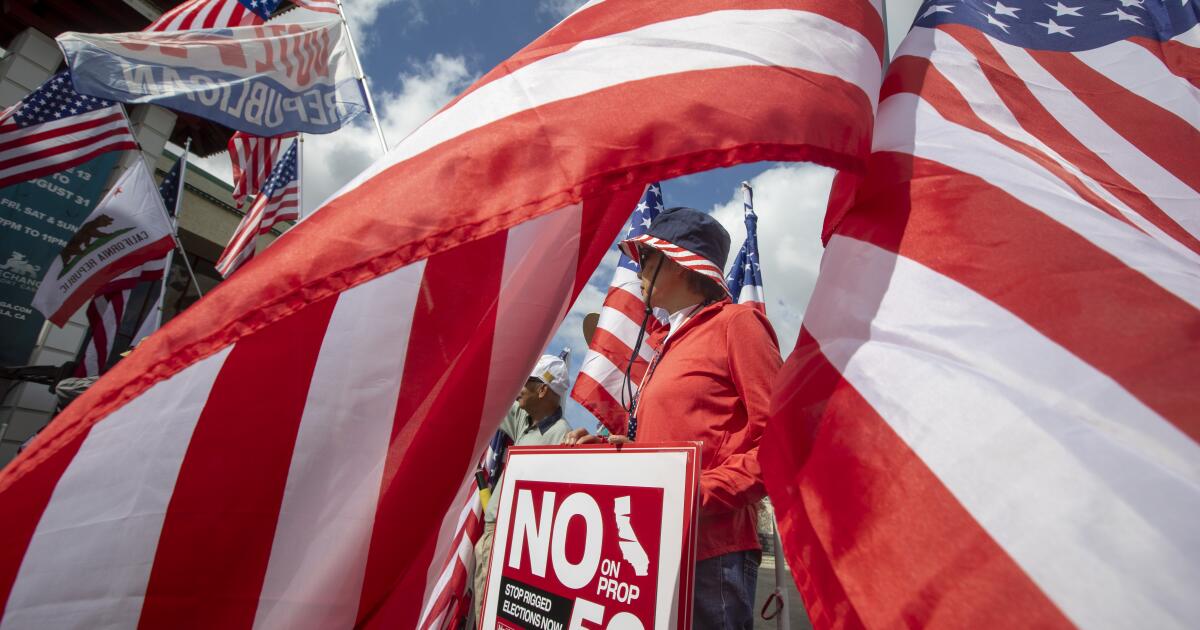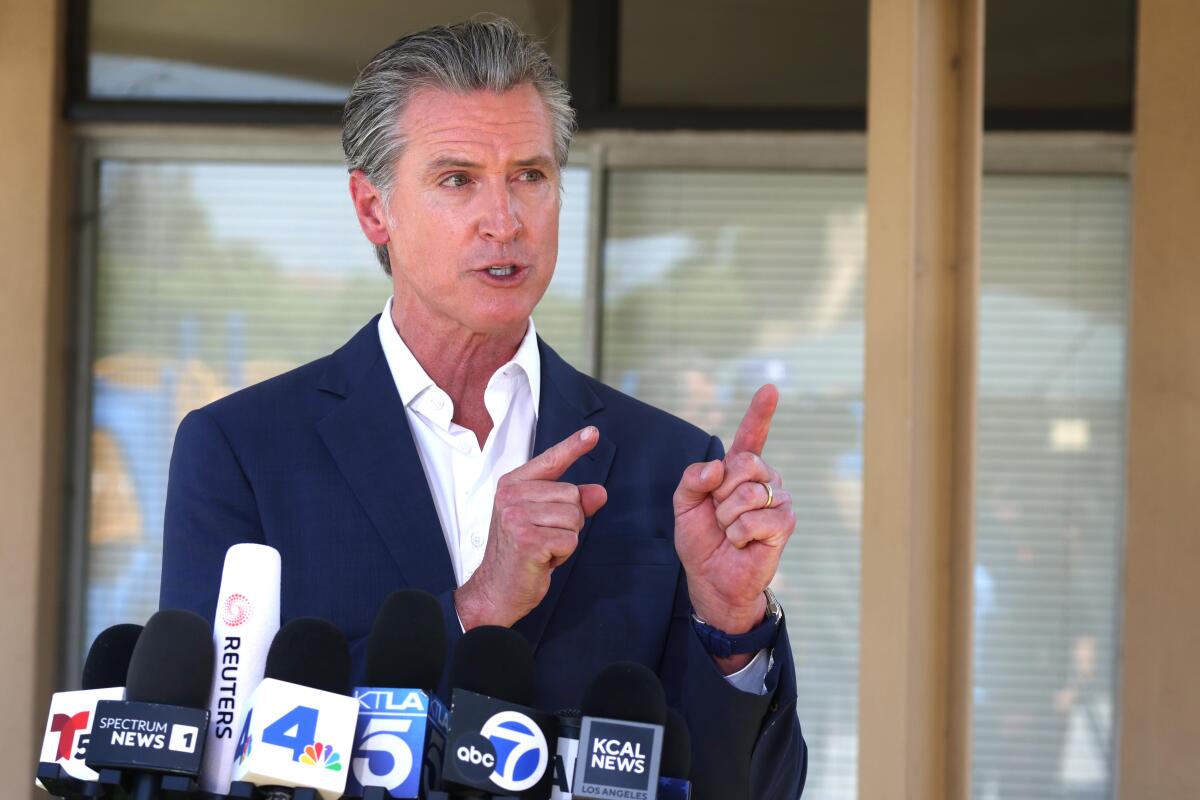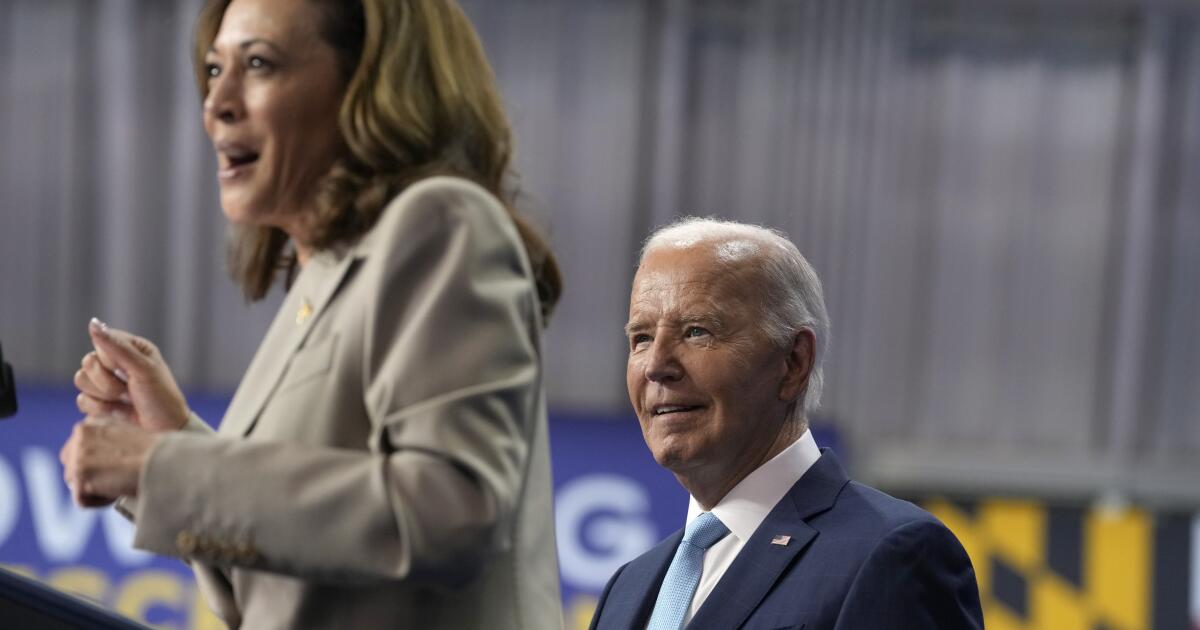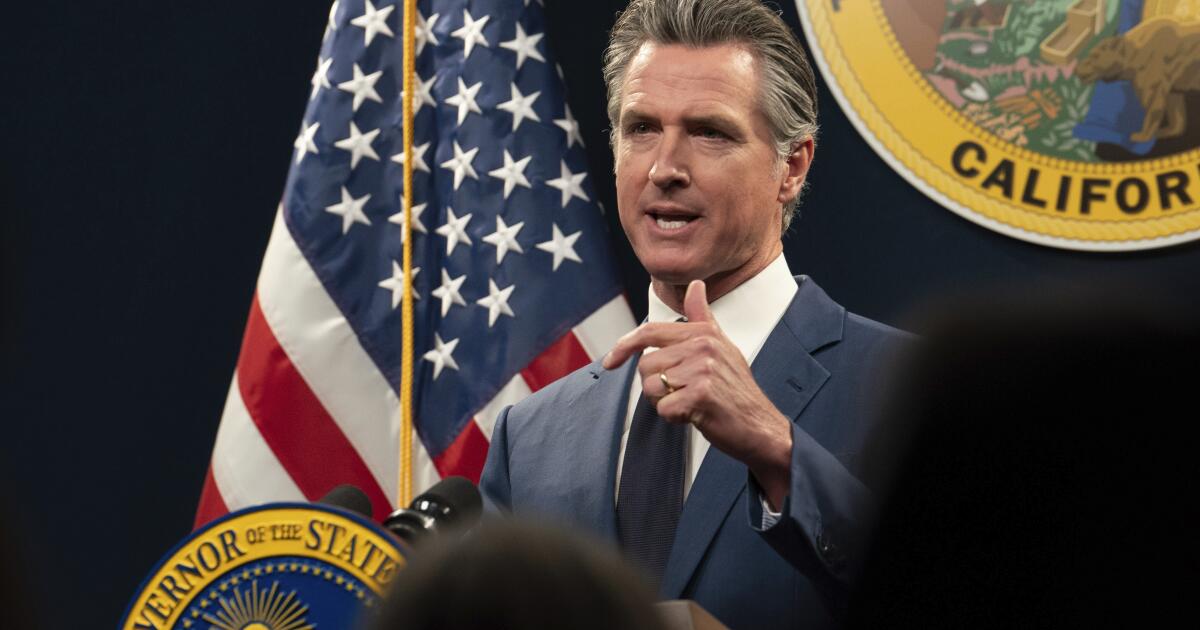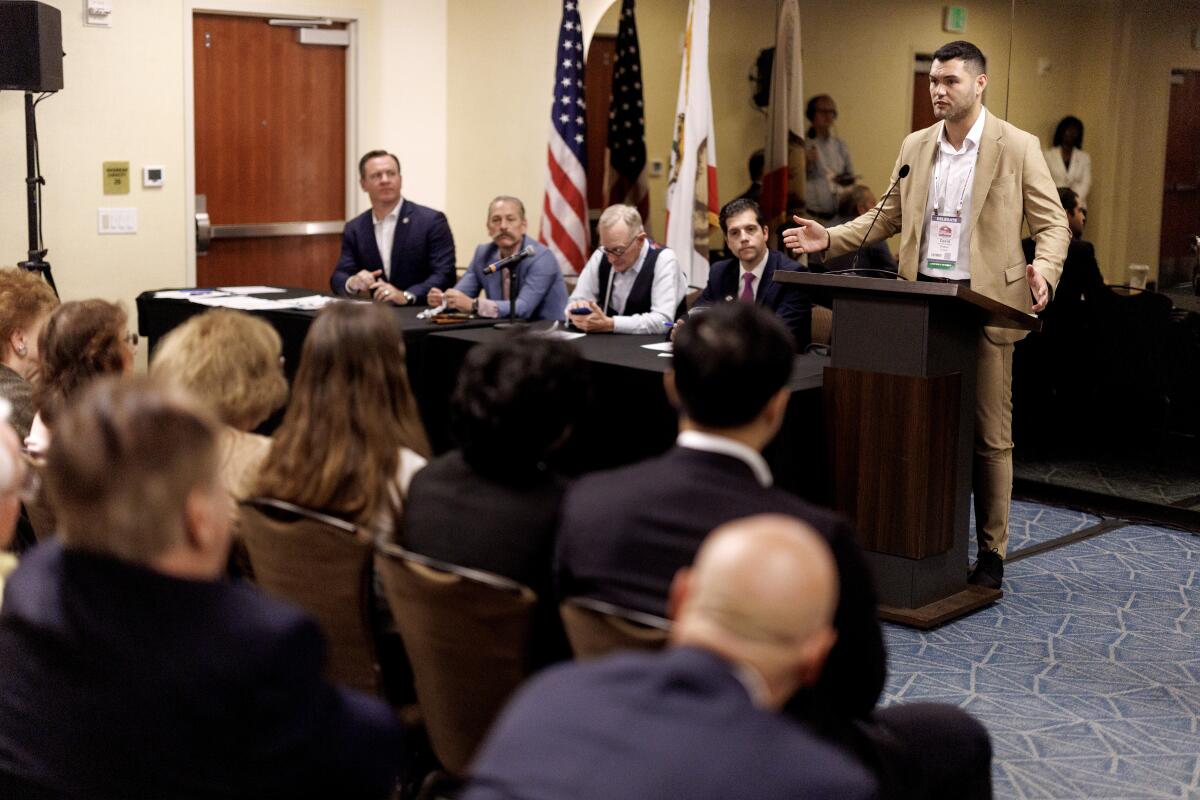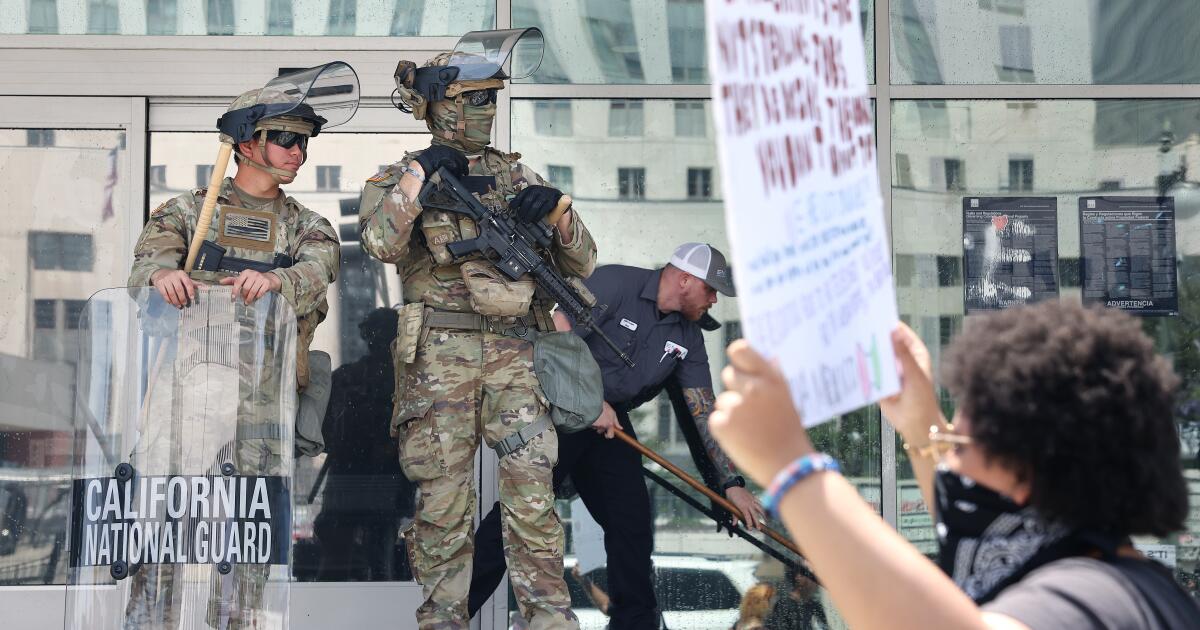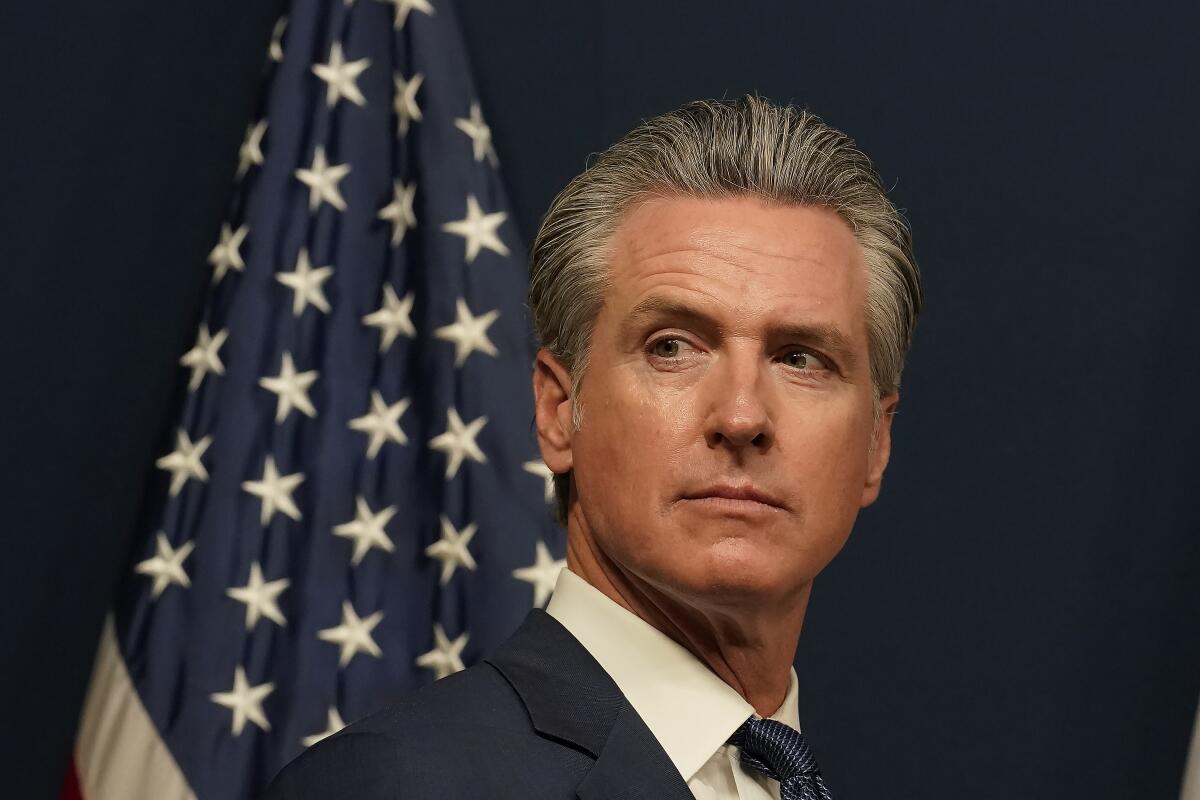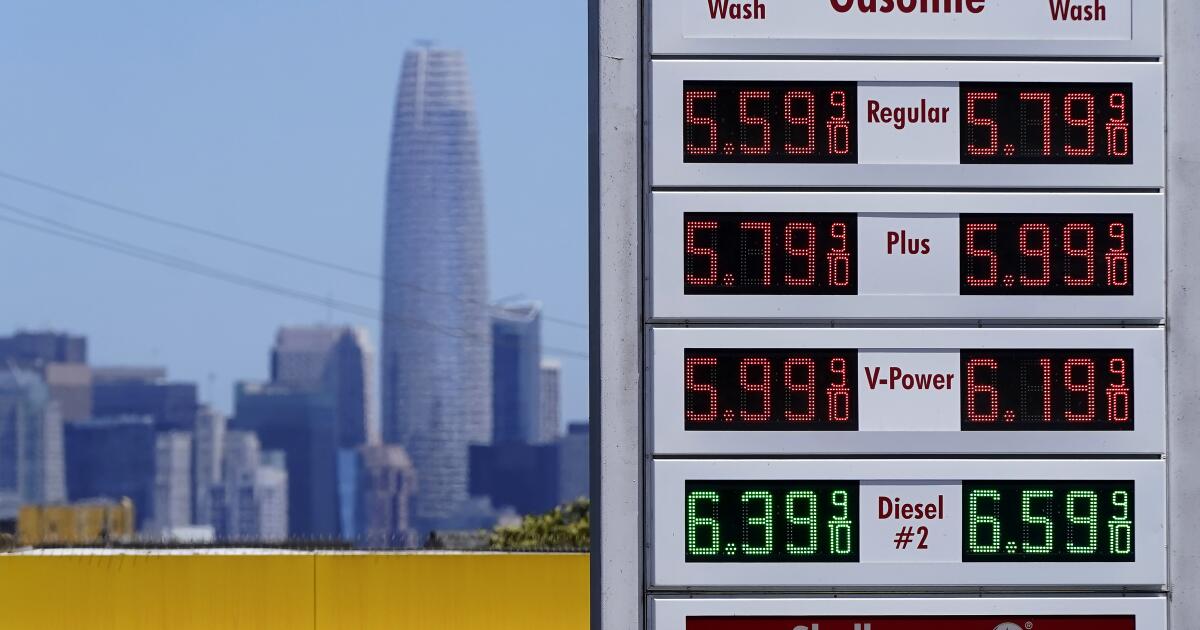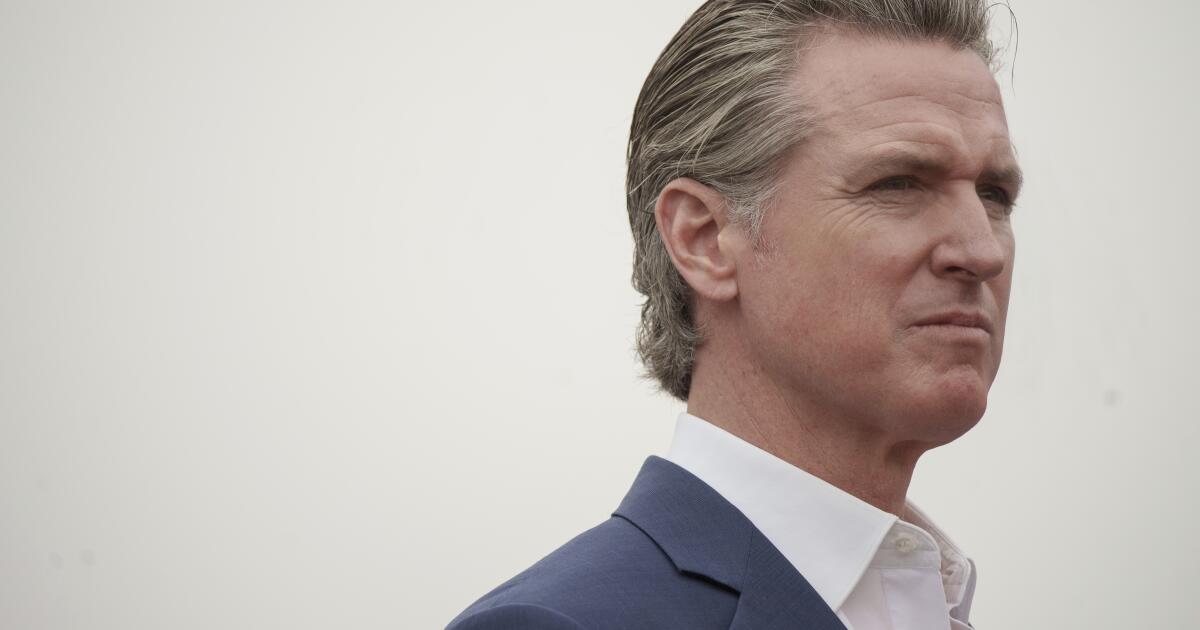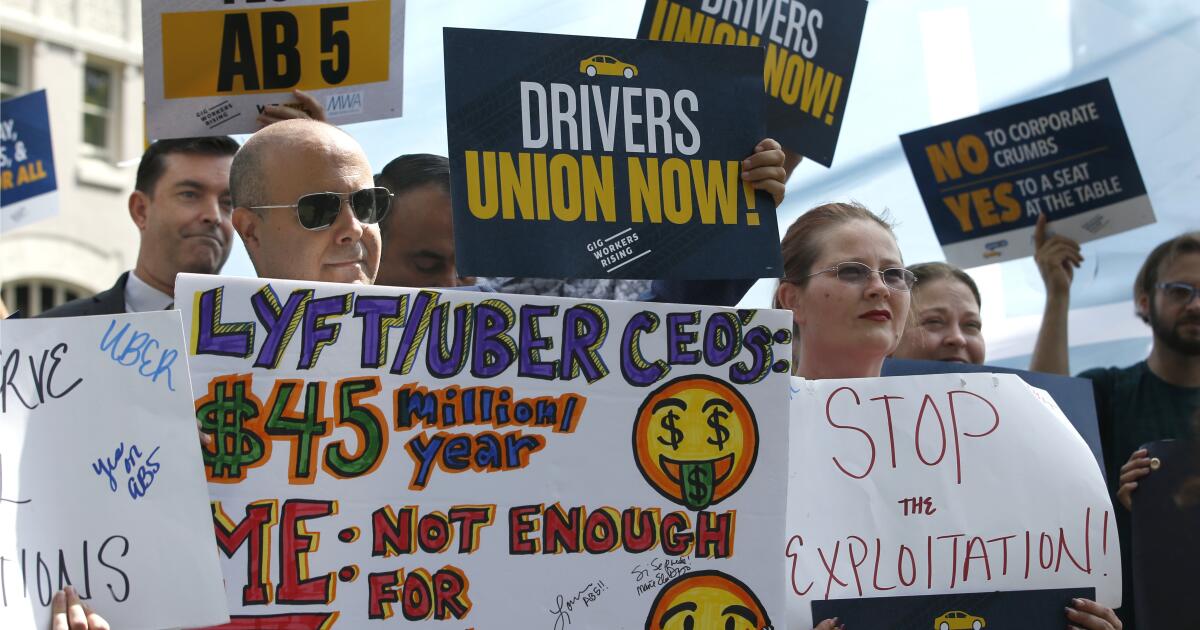Newsom on Trump’s climate hoax claim: ‘What an abomination’
SACRAMENTO — Gov. Gavin Newsom criticized President Trump’s rejection of climate science as economic self-sabotage and “an abomination,” warning the country is “doubling down on stupid.”
The remarks came a day after Trump told world leaders at the United Nations that climate change is a “hoax” and “the greatest con job ever perpetrated on the world.”
“What an embarrassment,” Newsom told former President Clinton during a live-streamed fireside chat during Climate Week in New York City.
Newsom’s rebuttal came during a series of high-visibility appearances on the East Coast, including a spot on “The Late Show with Stephen Colbert” on Tuesday where he called Trump an authoritarian and raised the prospect of the president attempting to remain in office illegally after his term ends.
Newsom homed in on Trump’s climate change denials while speaking to New York Times reporter David Gelles at the paper’s Climate Forward forum on Wednesday, saying thermometers are not political.
“You don’t have to believe in science. Believe in your own damn eyes,” Newsom said.
Newsom accused Trump of trying to recreate the 19th century by dismantling clean-energy standards and incentives, adding that the rollbacks cede momentum to China in electric vehicles, renewable energy innovation and other technologies. Newsom said California has worked for decades to be a leader in environmental policies that reduced smog, cleaned up waterways and created the market that led to an influx of electric cars and green technologies.
“There’s no Elon Musk, there’s no Tesla, without California’s regulatory framework,” Newsom said. “It wouldn’t exist.”
On Wednesday, his office said the state now has more than 200,000 public and shared electric vehicle charging points throughout the state — with nearly 70% more ports than gasoline nozzles.
Newsom said California’s economy has thrived amid investments in green energy.
Critics, including U.S. Energy Secretary Chris Wright, said Wednesday that California’s focus on green energy has come at another price — high electricity bills.
“If you’re blue-collar, you’re working class, that hurts your quality of life,” said Wright, who spoke onstage with Gelles after Newsom.
Last week, Newsom signed a sweeping package of climate and environmental bills that he said would push California toward a clean-energy future while making an effort to stabilize gasoline prices.
Among those bills was an extension of the state’s nation-leading cap-and-trade program through 2045. That program caps greenhouse gas emissions and raises billions for the California climate initiatives. The program also will provide $20 billion for the state’s controversial, much-delayed high-speed rail project, which U.S. Transportation Secretary Sean Duffy called a “boondoggle.”
With Trump pulling back electric car subsidies and attempting to override fuel efficiency standards, Newsom said California is “the only game in town right now as it relates to large scale environmental leadership.”
The governor’s series of appearances this week underscored how the fight over climate change — and Trump’s insistence that it’s a “green scam” invented by “stupid people” — has become another deeply political talking point. Newsom didn’t waste time pointing that out.
“It’s a disgrace what Donald Trump has done, and it is a disgrace what his administration is doing to the environment,” Newsom said.
In his appearance on Colbert’s show, Newsom reupped his view that Trump’s government is an authoritarian regime.
“People ask, well, is ‘authoritarianism’ you being hyperbolic?” Newsom said. “Bulls—, we’re being hyperbolic. If you’re a Black and brown community, it’s here in this country.”
Vice President JD Vance said Newsom’s allegations about the Trump administration are dangerous.
“Here’s what happens when Democrats like Gavin Newsom say that these people are part of an authoritarian government, when the left-wing media lies about what they’re doing, when they lie about who they’re arresting, when they lie about the actual job of law enforcement, what they’re doing is encouraging crazy people to go and commit violence,” Vance said, speaking about the gunman who opened fire onto a U.S. Immigration and Customs Enforcement location in Dallas on Wednesday.
Vance added that anyone whose political rhetoric encourages violence against law enforcement can “go straight to hell.”
Newsom, on the social media site X, mocked Vance’s comment about going to hell.
“Though when I watch you speak I certainly feel like I’m already there,” Newsom wrote
Newsom on Tuesday also said he believes Trump will attempt to ensure he remains president after his term ends.
“I fear that we will not have an election in 2028, I really mean that in the core of my soul, unless we wake up to the Code Red — what’s happening in this country, and we wake soberly to how serious this moment is,” Newsom said.

